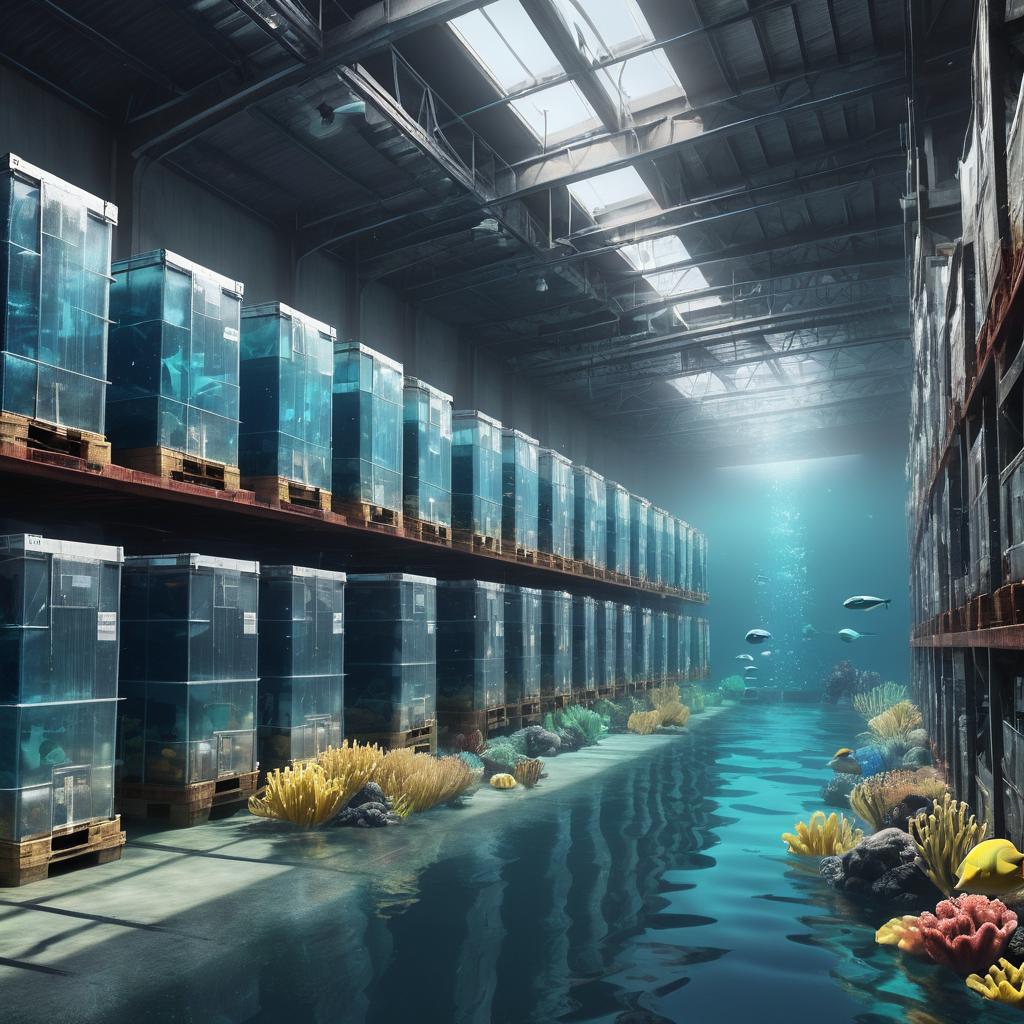As climate change reshapes our world, every sector of the economy is searching for innovative ways to be more sustainable. This is especially true for the logistics and supply chain industry, which uses a lot of energy and produces significant carbon emissions.
One of the emerging ideas is underwater warehouses. This concept, which might sound like science fiction, is gaining attention as a potential solution to several pressing issues.
Why consider underwater warehouses?
Underwater storage facilities are justified for various reasons:
- Climate Resilience: Traditional coastal warehouses face serious threats from rising sea levels. Storage facilities could be submerged to protect essential commodities from floods and severe weather.
- Temperature Control: Keeping a constant temperature can be achieved naturally and economically by using the ocean. Since deep ocean waters are consistently between 2 and 4 degrees Celsius, conventional warehouses that rely on energy-intensive HVAC systems are unable to operate.
- Space Optimization: The ocean’s vastness presents an opportunity to solve the ever-growing problem of limited land-based storage space, especially in densely populated coastal regions. A 2021 report by Statista projects the global warehousing market to reach a value of USD 543.5 billion by 2027, highlighting the significant need for additional storage solutions.
- Reduced Environmental Impact: Underwater warehouses can lower greenhouse gas emissions by using the ocean’s natural insulation, reducing the need for conventional refrigeration.
Challenges and Considerations
While the concept of underwater storage is intriguing, several challenges need to be addressed before it becomes a mainstream reality:
- Construction Costs: Building and maintaining underwater facilities currently requires specialized materials and technologies, making them significantly more expensive than traditional warehouses.
- Accessibility: Retrieving and transporting goods from underwater locations presents logistical hurdles. Developing efficient underwater transportation systems is crucial for practical implementation.
- Environmental Impact: The potential environmental impact of underwater warehouses needs thorough study. Construction activities and energy requirements for operating the facilities must be carefully evaluated to ensure sustainability.
- Marine Life: The potential disruption to marine ecosystems needs careful consideration throughout the planning and construction phases of underwater storage facilities.
Exploring the feasibility
Despite the challenges, several companies and research institutions are actively exploring the potential of underwater warehouses.
- Ocean Builders: This international design and development company has proposed a concept for “Ocean Pods,” prefabricated underwater storage units that could be deployed on the ocean floor.
- National University of Singapore (NUS): Researchers at NUS are studying the feasibility of underwater data centers, leveraging the natural cooling properties of the ocean.
The road ahead
Underwater warehouses remain a concept in its early stages, but the potential benefits are undeniable. As technology advances and construction costs become more manageable, these futuristic facilities could play a vital role in a climate-resilient and sustainable future for the logistics industry.
The final word: A call for collaboration
The development of underwater warehouses requires collaboration between various stakeholders – logistics companies, construction specialists, marine biologists, and governments. Open discussions and multi-disciplinary research are crucial to ensure that these underwater facilities are not only feasible but also environmentally responsible.
The future of storage may very well lie beneath the waves. I believe that exploring innovative solutions like underwater warehouses is essential for building a more resilient and sustainable logistics landscape.


